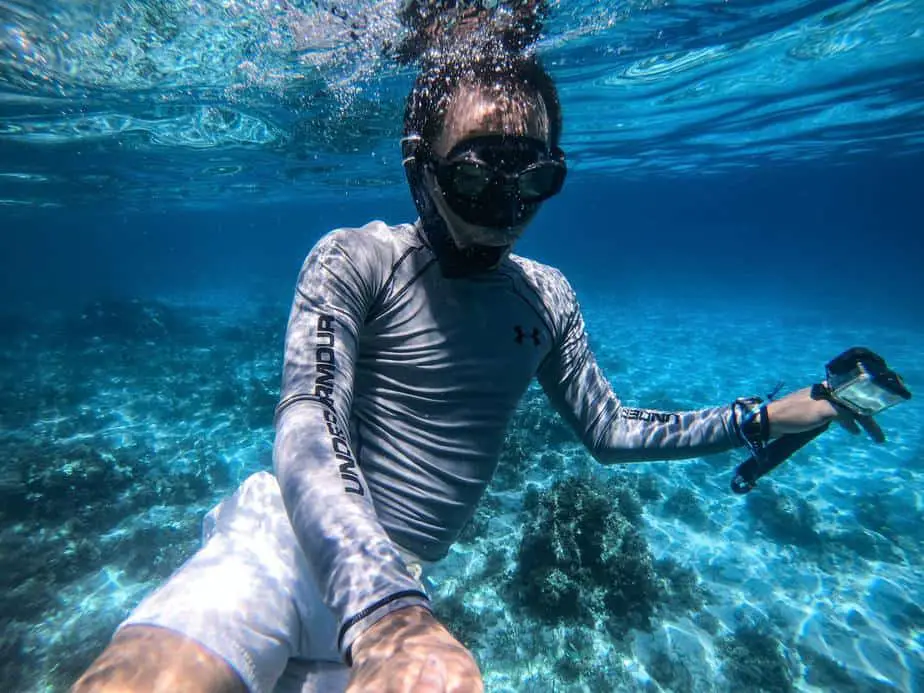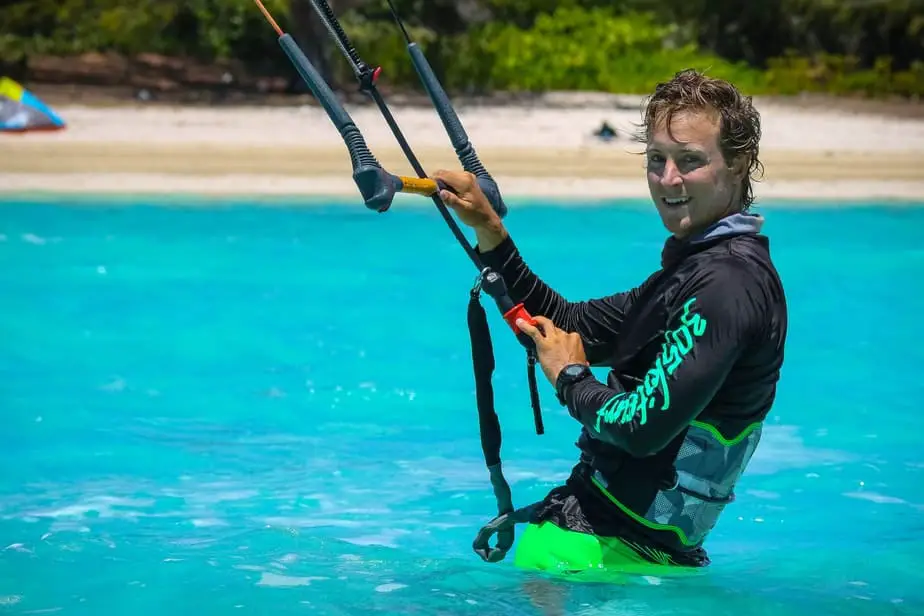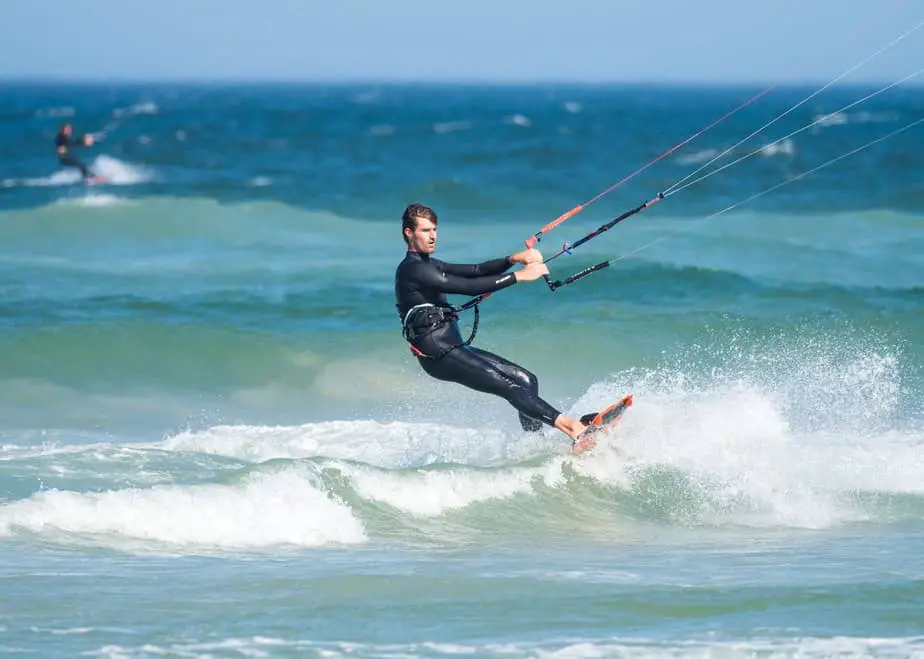Rash guards, rashies, or rash vests were primarily used by surfers to protect their skin from rubbing against their surfboard. Nowadays, they are used in a variety of water sports, including open water swimming, surfing, snorkeling, and scuba diving. It’s even worn for martial arts such as BJJ. Rash guards can have a loose or tight fit. A common question that these athletes have is how tight a rash guard should be?
For most cases, rash guards should have a tight fit on your body. A tight fit produces less drag and reduces the chance of the rash guard getting caught on something. With that said, a rash guard should not be so tight that it feels constricting. It also should not restrict your movement in any way. In this article, we’ll give you tips on how to find the perfect rash guard fit, as well as discuss the advantages of wearing a rash guard.
What’s the right fit for you?
With how versatile rash vests are, it’s difficult for us to make a blanket statement like “tight rash guards are best” or “loose-fitting ones are better.” It ultimately depends on what you intend to use it for as well as personal preference.
As we mentioned, rash guards were originally designed for surfers to protect their chest from the rough grip of the surfboard. If you’re a surfer, as long as the rash guard is comfortable and protects your skin from the board, it doesn’t matter what kind of fit you have.
In sports where performance is king, rash guards should have a skin-tight fit, almost like a second skin. If a rash guard is loose, it increases drag underwater and wind resistance at the surface. It’s also a hazard because it’s easy for the loose material to snag on something or to get pulled.
There are some rare instances where a loose fit would be preferred. For instance, dinghy sailors will want to wear a loose-fitting rashie over their buoyancy aid and other layers. The rash vest in this case won’t feel very loose once it’s put over multiple layers. This reduces the overall windage and prevents the other gear from snagging against the boat.
With that said, in most cases getting a form-fitting rash guard is the most versatile option. If you’re not aware, most rash guards are not designed to keep you warm. However, if you were to wear a rash guard under a wetsuit, then it can provide an extra layer of insulation so that you can stay warmer underwater. A loose rash guard could not be worn under a wetsuit.
As you can see, both the loose and clingy fit has their own benefits which give you a different experience. However, if you know what you’re going to use it for, then that may help you decide which of the two types you need. If you’re still unsure of which type is better for your sport, then it might be a good idea to learn a bit more about rash guards in general and how they can affect your performance.
What you should know about rash guards
As the name literally states, rash guards help protect the wearer from rashes. However, that’s selling the product short. Rash guards can also guard against chafing and the sun’s harsh UV rays. And even though most rashies don’t offer much in terms of insulation, some rash vests made of neoprene do offer some insulation from the cold weather and water, though not as much as a wetsuit.
Depending on the color of the rash vest, it can also help boaters spot you more easily in the water which reduces the chances of a collision. Rashies are often worn by surfers who want to prevent chafing against the board and sand. Swimmers can use them for sun protection. Divers can use them for extra insulation and to prevent skin chafing in the wetsuit. If you intend to wear a rash vest under a wetsuit, then it must have a tight fit.

Here are some of the benefits provided by rash guards:
- Sun protection thanks to their high UPF rating (50+). Prevent sunburns and skin damage from occurring. Helps you save on using reef-friendly sunscreen.
- External protection against rashes, chafing, irritation, and jellyfish stings.
- Offers chafing protection when worn under a wetsuit.
- Can be used as an extra layer of insulation when worn under a wetsuit.
- Offers most of the same benefits as a wetsuit (minus the insulation/buoyancy) making it ideal for tropical weather when a wetsuit would be too hot
- If wearing a thermal/neoprene rash guard, then it does offer some insulation as well.
- Provides modesty and can cover up your swimsuit.
- Bright colors help you get spotted easily.
- Can be worn by anyone.
Style and comfort
As you begin your search for a rash guard, you will find there are many options to choose from other than just tight and loose-fitting. You’ll also have to consider long-sleeved, short-sleeved, or tank top rash guards. There are also male, female, and unisex rash guards.
Obviously, long-sleeved rash guards cover the most amount of skin and therefore provide the greatest amount of protection. With that said, most rash vests come in both long-sleeved and short-sleeved versions. Regardless of which type you get, remember that rash guards don’t offer much in the form of insulation, unless you are wearing a thermal or neoprene rash guard.
Even though there are unisex rash guards, in our opinion it’s just terrible for both men and women. Just look for rashies designed specifically for males or females. The shape of these rashies will fit much better, allowing for a tight fit that is also comfortable. For instance, women’s rashies will have more space in the bust area with narrower shoulders, and men’s will have much broader shoulders.
Rash guards are also available in various colors and prints so that you can get one that best displays your personality and style. You can also go the utilitarian route and just get an extremely bright rash guard for maximum visibility in the water. If you’re really savvy, you can get the best of both worlds – maximum style and comfort in one rash guard.
We recommend getting a long-sleeved tight fit rash guard because it offers the greatest sun and skin protection. Short-sleeved rash guards can keep your arms slightly cooler. If you are doing a sport where there is lots of arm movement, such as surfing or swimming, then you want a form-fitting sleeved rashie to protect your underarms from chafing.
Stitching
Another consideration is how the rash guard’s seams have been stitched. For active water sports such as swimming and surfing, you’ll want a rash guard with flat seams. A tight-fitting rash guard will hug the skin so a raised seam construction would be uncomfortable. Raised seams will chafe the skin which goes against the purpose of wearing a rash guard.
The optimal rash guard will have flat-locked seams, which means that the seam is flat on both sides. This seam is the most stretchy and looks stylish due to both sides showing the seam thread. Flat-locked seams reduce the chances of chafing and are necessary for a tight fit.
Are rash guards better than t-shirts?

I know what you’re thinking. Rash guards? Tight fit? Loose fit? Why not just wear a t-shirt instead?
The main problem with wearing a t-shirt is that the fabric absorbs too much water. Ever get caught in the rain without an umbrella and end up completely soaked? Do you remember how heavy your shirt got? If you’re going to be surfing and you wear a t-shirt, you’re just wasting a bunch of energy carrying around the excess water your shirt soaked up.
While we’re talking about fabric, the material used in a rash guard is designed for water. Rash guards don’t stretch out as quickly and are more durable. Furthermore, they are moisture wicking, meaning water doesn’t really get absorbed and the rash guard will dry rapidly. This keeps you light and unencumbered while preventing bacteria build-up.
Rash guards also offer much more protection than t-shirts. For instance, you might think that t-shirts offer you some form of UV protection. Not so, the UV rays will penetrate through the t-shirt and still damage your skin. You specifically need clothing with a UPF rating, which most rash guards have.
Additionally, t-shirts also tend to trap air and balloon out in the water, making it difficult to move around in. A form-fitting rash guard preserves your range of motion. There’s a reason why it’s often called a second skin. A properly-fitting rash guard feels comfortable and you’d hardly even notice it’s there. You really can’t compare a t-shirt to a rash guard.
Rash guards vs. swim shirts
This comparison is more apt because swim shirts are designed to be worn in the water. As such, swim shirts and rash guards sometimes get mixed up. After all, rash guards also come in a short-sleeved version, which is functionally very similar to a swim shirt; both garments have chafe-free seams and offer sun protection.
However, swim shirts tend to fit more like regular clothing that just happens to provide you with UPF 50 protection due to its loose fit. This creates more drag while surfing, however it may be more comfortable to wear out of the water.
With that said, depending on the quality of the rashie, it can have significantly more features than a swim shirt, such as:
- High collar for additional sun protection around the neck.
- Pockets.
- Zippers.
- Thumb holes for long-sleeves which keeps the sleeves in place.
- Silicone waistbands to reduce sliding.
- Elastic bands sewn into the hem to keep the shirt from riding up.
- Boardshort fasteners.
If you’re serious about water sports and want maximum performance, you should go with a rash guard. If you’re casual and want a very loose, comfortable fit, then go with a swim shirt.

